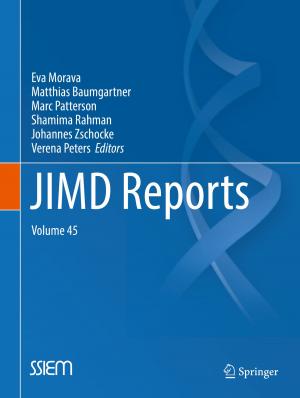Diagnosis Related Groups in Europe
Uses and Perspectives
Nonfiction, Health & Well Being, Medical, Reference, Biostatistics, Science & Nature, Mathematics| Author: | ISBN: | 9783642784729 | |
| Publisher: | Springer Berlin Heidelberg | Publication: | December 6, 2012 |
| Imprint: | Springer | Language: | English |
| Author: | |
| ISBN: | 9783642784729 |
| Publisher: | Springer Berlin Heidelberg |
| Publication: | December 6, 2012 |
| Imprint: | Springer |
| Language: | English |
When John Thompson and I first began talking about finding a way to measure and cost the output of hospitals in the 1960s. we really had no concept of the need for this kind of result. In fact. if we had listened to others in the health services research community. we would rrever have begun or persisted in the task. But it seemed important to us to begin to understand what up until then seemed unexplainable - the rather strange cost behavior of hospitals. We had the benefit of Professor Martin Feld stein's observation that case-mix was certainly an important factor. but we had literally no guidance on how to make some sense out of the very large number of illnesses that beset the human race. and the very large number of different processes that obtain in our hospitals as they attempt to cope with those illnesses. We were fortunate to find a small number of curious and capable graduate students to join us in this effort. for without them we would not have had a chance of success. While many contrib uted to the ultimate outcome. it is important to single out Ronald E. Mills. Richard F. Averill. Youngsoo Shin. and Jean L. Freeman for their efforts over many years. The diagnosis-related groups (DRGs) constitute a way of identifying the normal output of hospitals in a consistent and exhaustive manner.
When John Thompson and I first began talking about finding a way to measure and cost the output of hospitals in the 1960s. we really had no concept of the need for this kind of result. In fact. if we had listened to others in the health services research community. we would rrever have begun or persisted in the task. But it seemed important to us to begin to understand what up until then seemed unexplainable - the rather strange cost behavior of hospitals. We had the benefit of Professor Martin Feld stein's observation that case-mix was certainly an important factor. but we had literally no guidance on how to make some sense out of the very large number of illnesses that beset the human race. and the very large number of different processes that obtain in our hospitals as they attempt to cope with those illnesses. We were fortunate to find a small number of curious and capable graduate students to join us in this effort. for without them we would not have had a chance of success. While many contrib uted to the ultimate outcome. it is important to single out Ronald E. Mills. Richard F. Averill. Youngsoo Shin. and Jean L. Freeman for their efforts over many years. The diagnosis-related groups (DRGs) constitute a way of identifying the normal output of hospitals in a consistent and exhaustive manner.















